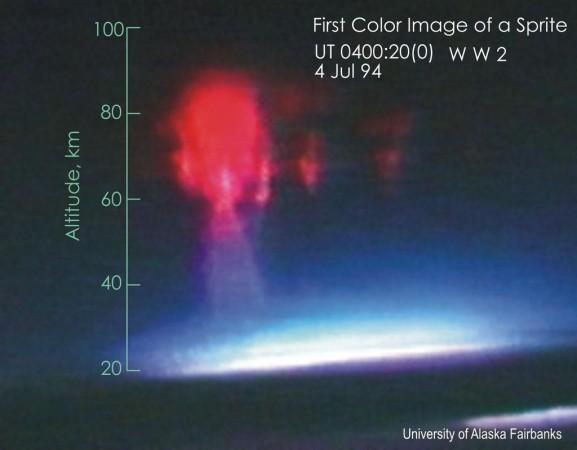
A rare phenomenon was captured by an amateur astronomer named David Finlay from Australia. The 44-year-old has captured a video showing stunning space lightning flashes. [WATCH THE VIDEO GIVEN BELOW]
ALSO READ: Never seen before bizarre alien phenomenon spotted in skies across UK! [VIDEO]
These unusual lightning strikes took place in the skies above New South Wales in Australia. Finlay hails from a south western state in Australia – Kiama.
The rare lightning strikes known as sprites were spotted and captured by him while he was sky-watching near his home on Tuesday.
"I set my camera up, and literally within minutes – almost no time at all – I started to see the sprites flashing on the horizon," Finlay was quoted as saying by the West Australian.
"I couldn't believe it. I thought I would be lucky to capture one or two, which would have been fantastic, but they just kept happening," Finlay added.
According to the amateur Australian astronomer, this is the first time that so many sprites have been captured in a go in a video.
Here are top seven interesting things to know about this rare thunderstorm:
1. Sprites originate at the time of storms and what makes them unique is that instead of falling towards the ground like lightning, these tend to travel upwards into space.
2. These electrical discharges are also referred to as "upside down lightning". Generated by the discharges of positive lightning between the ground and thundercloud, sprites usually last for a few milliseconds, which is longer than the span of normal lower stratospheric discharges.

3. Sprites were first recorded on July 6, 1989, by the researchers from the University of Minnesota. They used a low-light video camera which accidentally took the first photo of this phenomenon.
4. Apart from recording this mysterious phenomenon from the ground, they have also been documented from space as well as from aircraft. This phenomenon is being investigated thoroughly.
5. This phenomenon occurs in the largest thunderstorm systems. It has been spotted over North America, Asia, Australia, Central and South America, Europe, Central Africa and the Sea of Japan.
6. Sprites have been defined in three categories by Matthew 'Geoff' McHarg PhD of University of Alaska Fairbanks (U.AK) of the US AirForce Research Academy and NASA. An image intensifier on the front of super slow motion camera was used by McHarg and his colleagues to categorise the sprites based on their appearance:
- Jellyfish sprite: These types of sprites are very large, around 48 by 48 km (30 by 30 miles).
- Column sprite (C-sprite): We still don't know much about these sprites. They are large-scale and prevail above Earth.
- Carrot sprite: These sprites are column shaped and got long tendrils.
7. These often occur in clusters of two or more across an altitude ranging between 50 to 90 kilometres (31 to 56 mi)
Watch the recording of the sprites captured in Australia:









!['Had denied Housefull franchise as they wanted me to wear a bikini': Tia Bajpai on turning down bold scripts [Exclusive]](https://data1.ibtimes.co.in/en/full/806605/had-denied-housefull-franchise-they-wanted-me-wear-bikini-tia-bajpai-turning-down-bold.png?w=220&h=138)



